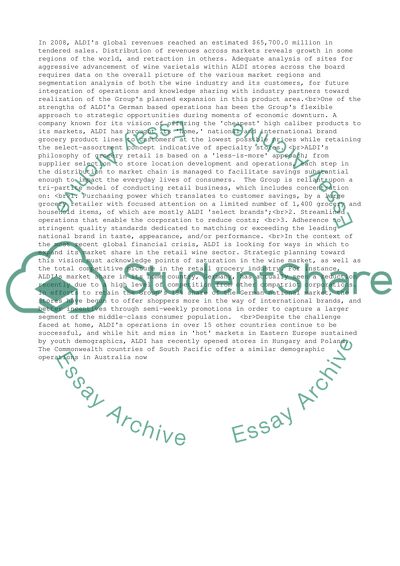Cite this document
(“Wine Market (ALDI Group) Case Study Example | Topics and Well Written Essays - 3000 words”, n.d.)
Wine Market (ALDI Group) Case Study Example | Topics and Well Written Essays - 3000 words. Retrieved from https://studentshare.org/business/1531263-wine-market-aldi-group
Wine Market (ALDI Group) Case Study Example | Topics and Well Written Essays - 3000 words. Retrieved from https://studentshare.org/business/1531263-wine-market-aldi-group
(Wine Market (ALDI Group) Case Study Example | Topics and Well Written Essays - 3000 Words)
Wine Market (ALDI Group) Case Study Example | Topics and Well Written Essays - 3000 Words. https://studentshare.org/business/1531263-wine-market-aldi-group.
Wine Market (ALDI Group) Case Study Example | Topics and Well Written Essays - 3000 Words. https://studentshare.org/business/1531263-wine-market-aldi-group.
“Wine Market (ALDI Group) Case Study Example | Topics and Well Written Essays - 3000 Words”, n.d. https://studentshare.org/business/1531263-wine-market-aldi-group.


